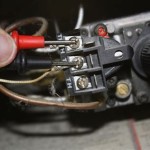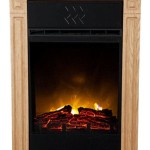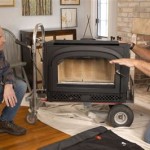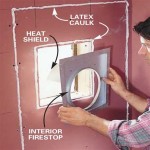Stackable Stone Outdoor Fireplace: A Comprehensive Guide
Outdoor fireplaces offer a unique focal point and gathering space for homeowners seeking to enhance their outdoor living area. Among the various types available, stackable stone outdoor fireplaces present a compelling option due to their aesthetic appeal, relative ease of installation, and potential for customization. This article provides a detailed exploration of stackable stone outdoor fireplaces, covering their construction, benefits, installation considerations, and maintenance requirements.
Stackable stone fireplaces are characterized by their modular design, utilizing individual stone units that interlock or are secured together to form the firebox and surrounding structure. These units are typically manufactured from concrete, natural stone veneer, or cast stone, each offering distinct advantages in terms of appearance, durability, and cost. The modular nature of these kits simplifies assembly compared to traditional masonry fireplaces, reducing the need for extensive on-site construction and skilled labor.
Key Advantages of Stackable Stone Fireplaces
Stackable stone outdoor fireplaces offer several advantages that make them a popular choice for homeowners. These advantages include ease of installation, aesthetic versatility, and cost-effectiveness.
Simplified Installation: The modular design of stackable stone fireplaces significantly reduces installation time and complexity. Pre-cut and pre-engineered components ensure a snug fit and minimize the need for extensive cutting or shaping. This makes it a viable project for experienced DIY enthusiasts, although professional installation is often recommended for optimal results and adherence to local building codes. The provided instructions usually offer a step-by-step guide, enabling efficient assembly. This modularity contrasts sharply with traditional masonry fireplaces which require considerable expertise and time for proper construction.
Aesthetic Versatility: Stackable stone is available in a wide range of colors, textures, and stone types, allowing homeowners to match the fireplace to their existing outdoor landscaping and architectural style. Whether a rustic, natural look or a modern, sleek design is desired, stackable stone can be adapted to achieve the desired aesthetic. Options range from mimicking natural fieldstone to replicating the clean lines of manufactured stone, offering flexibility in design. This adaptability contributes to the overall appeal and value enhancement of the outdoor living space.
Cost-Effectiveness: Compared to custom-built masonry fireplaces, stackable stone fireplaces often represent a more cost-effective solution. The pre-manufactured components reduce material waste and labor costs, leading to overall savings. While the initial investment may vary depending on the size, style, and material chosen, the long-term benefits of reduced installation time and potential maintenance costs contribute to the overall value proposition. Furthermore, the availability of various material options allows homeowners to select a product that aligns with their budget.
Materials and Construction of Stackable Stone Fireplaces
The selection of materials for a stackable stone fireplace significantly impacts its appearance, durability, and overall performance. Understanding the properties of different materials is crucial for making an informed decision.
Concrete: Concrete is a commonly used material for stackable stone due to its affordability and versatility. It can be molded into various shapes and textures, mimicking the appearance of natural stone. Concrete stone units are typically reinforced with fiber or steel to enhance their strength and durability. Proper sealing is essential to protect concrete from moisture damage and staining. While less expensive, concrete may not have the same natural variation and visual appeal as natural stone.
Natural Stone Veneer: Natural stone veneer offers the authentic look and feel of natural stone without the weight and expense of solid stone. Thin slices of natural stone are adhered to a concrete backing, creating a durable and aesthetically pleasing surface. This option provides a wide range of natural stone options, including granite, limestone, and sandstone. The natural variations in color and texture inherent in stone veneer contribute to a unique and visually appealing fireplace design. However, natural stone veneer typically comes at a higher price point compared to concrete.
Cast Stone: Cast stone is a manufactured material that closely resembles natural stone in appearance and texture. It is typically made from a mixture of cement, aggregates, and pigments, carefully molded to replicate the details of natural stone. Cast stone offers a balance between aesthetics and affordability, providing a durable and visually appealing option. It is also generally more consistent in color and texture compared to natural stone, which may be preferred in certain design applications. Proper installation and sealing are necessary to maintain the appearance and integrity of cast stone.
The internal firebox is typically constructed from refractory bricks or panels designed to withstand high temperatures. These materials are essential for containing the fire and protecting the surrounding structure. A steel firebox insert may also be included to further enhance durability and heat retention. A chimney or flue is required to safely vent smoke and combustion gases away from the fireplace. The design and construction of the chimney must comply with local building codes and regulations.
Installation Considerations for Stackable Stone Fireplaces
Proper installation is critical to ensure the safety, performance, and longevity of a stackable stone fireplace. Several factors must be considered before and during the installation process.
Site Preparation: A solid and level foundation is essential for supporting the weight of the fireplace. A concrete slab or a compacted gravel base is typically used as the foundation. The foundation must be large enough to accommodate the dimensions of the fireplace and any surrounding patio or landscaping elements. Proper drainage should be considered to prevent water from pooling around the base of the fireplace. Local building codes may require specific foundation requirements.
Building Codes and Permits: Before beginning the installation, research local building codes and regulations regarding outdoor fireplaces. Obtain any necessary permits to ensure compliance. Building codes may dictate specific requirements for setbacks from property lines, chimney heights, and fire safety measures. Failure to comply with local codes can result in fines or the need to dismantle the fireplace.
Assembly Process: Carefully follow the manufacturer's instructions for assembling the fireplace. Use the recommended adhesives or fasteners to secure the stone units together. Ensure that each unit is properly aligned and leveled to create a structurally sound and aesthetically pleasing fireplace. Pay close attention to the firebox construction, ensuring that the refractory materials are properly installed. If unsure about any aspect of the installation process, consult with a professional contractor.
Venting and Chimney: The chimney or flue must be properly sized and installed to ensure adequate draft and prevent smoke from backing up into the surrounding area. The chimney must extend above the roofline of nearby structures to prevent downdrafts. Consult with a professional chimney installer to determine the appropriate chimney size and design for the fireplace. Regular chimney inspections and cleaning are essential for maintaining safety and preventing chimney fires.
Surrounding Area: Consider the placement of the fireplace in relation to surrounding structures, vegetation, and seating areas. Ensure that there is adequate clearance around the fireplace to prevent fire hazards. Non-combustible materials, such as stone or gravel, should be used in the immediate vicinity of the fireplace. Provide ample seating and lighting to create a comfortable and inviting outdoor gathering space. The placement of the fireplace should also consider prevailing wind directions to minimize smoke nuisance for neighbors.
Maintaining Stackable Stone Fireplaces
Regular maintenance is essential to prolong the life and maintain the appearance of a stackable stone fireplace. Proper care will help prevent damage from weathering, staining, and wear and tear.
Cleaning: Periodically clean the stone surfaces of the fireplace to remove dirt, dust, and debris. Use a mild detergent and water solution, along with a soft brush or sponge. Avoid using harsh chemicals or abrasive cleaners, as these can damage the stone surface. Rinse the fireplace thoroughly with clean water after cleaning. For stubborn stains, consider using a specialized stone cleaner designed for the specific type of stone used in the fireplace construction. Power washing can be used with caution, ensuring the pressure is not too high to damage the stone or mortar joints.
Sealing: Apply a sealant to the stone surfaces to protect them from moisture damage and staining. Choose a sealant that is specifically designed for the type of stone used in the fireplace construction. Follow the manufacturer's instructions for applying the sealant. Reapply the sealant as needed, typically every one to three years, depending on the climate and exposure to the elements. Sealing is particularly important for concrete and cast stone, as these materials are more porous than natural stone.
Chimney Maintenance: Schedule regular chimney inspections and cleaning to remove creosote buildup. Creosote is a flammable byproduct of burning wood that can accumulate in the chimney and pose a fire hazard. A certified chimney sweep can inspect the chimney for damage and clean it as needed. The frequency of chimney cleaning depends on the frequency of fireplace use and the type of wood burned. The National Fire Protection Association (NFPA) recommends that chimneys be inspected annually and cleaned when necessary.
Repairing Damage: Promptly repair any cracks, chips, or other damage to the stone surfaces or mortar joints. Small cracks can be repaired with a mortar patching compound that matches the color of the existing mortar. Larger cracks or damaged stones may require professional repair. Addressing damage promptly will prevent it from worsening and potentially compromising the structural integrity of the fireplace. Freezing and thawing cycles can exacerbate existing damage, so repairs are particularly important in cold climates.
By following these maintenance guidelines, homeowners can ensure that their stackable stone outdoor fireplace remains a beautiful and functional centerpiece of their outdoor living space for years to come.

How To Build An Outdoor Stacked Stone Fireplace

Outdoor Fireplaces Freshwater Farms

Outdoor Stacked Stone Fireplace With Hearth Patio Fireplaces Backyard

Outdoor Stacked Stone Fireplace With Hearth And Seating Wall Patio Backyard Designs

Natural Stacked Stone Veneer Fireplace Ideas

Stacked Stone Veneer Stoneyard
.jpg?strip=all)
Design Your Dream Patio With Our Stacked Stone Tool

How To Build An Outdoor Fireplace Today S Creative Life

Stonetutorials Living Stone Masonry

Fire Pits And Fireplaces Wilson Bros Landscape
Related Posts








